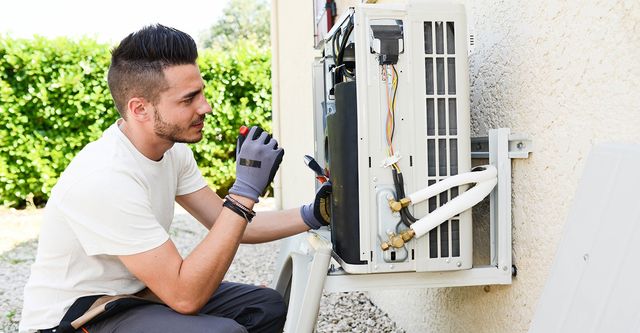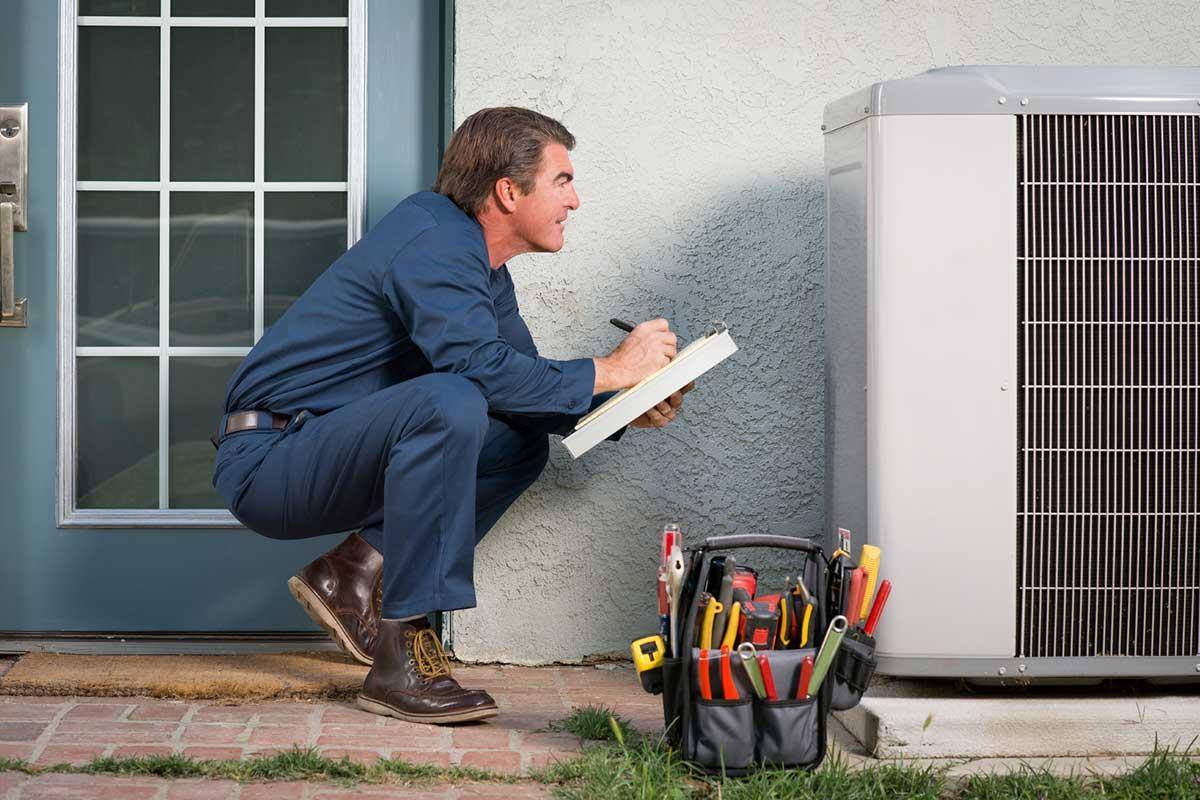If you've ever found yourself in an area where the air conditioning just couldn't appear to stay up to date with the summertime heat, you may benefit from evaluating your area.
Guaranteeing your air conditioning system is properly sized and installed needs attention to vital dimensions such as space dimension, window and door dimensions, ceiling elevation, insulation quality, and air flow patterns. By comprehending these factors, you can optimize your air conditioning system's efficiency and performance.
Yet just how exactly do these measurements impact your cooling installment?
Key Takeaways
- Accurately gauge space measurements for appropriate device ability and air movement optimization.
- Select energy-efficient windows and doors to enhance insulation and reduce warm transfer.
- Guarantee excellent vent placement and unblocked air movement for effective cooling circulation.
- Update insulation to boost thermal resistance, seal spaces, and boost general system performance.
Area Dimension Measurements
When determining space dimension for air conditioning installation, ensure you precisely examine the dimensions to determine the appropriate device ability. Begin by taking into consideration furniture positioning within the area. Furniture can obstruct air flow if positioned too near vents or the air conditioning unit. To assure maximum cooling performance, prepare your furnishings in a manner that promotes appropriate air flow throughout the room.

In addition, take into consideration the area's design and size when preparing for air circulation. Proper air circulation is critical for preserving a regular temperature level throughout the area. Bear in mind any obstacles that can interrupt the circulation of air, such as drapes blocking vents or large items of furniture blocking air movement. By ensuring sufficient room for air to flow easily, you can make best use of the effectiveness of your cooling device and develop a comfortable setting in your house.
Doors And Window Capacities
To assure correct a/c installation, evaluate the dimensions of windows and doors in the area to maximize air flow and cooling down efficiency. When examining window and door dimensions, think about the following:
- Frame Compatibility: Make sure that the air conditioning device you choose works with the structures of your doors and windows. Improper fit can lead to air leaks and reduced energy effectiveness.
- Installment: Think about the installation procedure when choosing an a/c device. Some devices may call for certain window measurements or additional alterations for correct installment.
- Product Choice: Choose doors and windows made from products that provide good insulation to boost energy efficiency. Effectively insulated windows and doors can assist preserve a constant temperature in the space.
- Power Performance: Opt for energy-efficient doors and windows to minimize heat transfer and improve the general efficiency of your air conditioning system. Energy-efficient products can improve the cooling capacities of your space while reducing energy costs.
Ceiling Elevation Assessment
Assessing the height of your ceiling is essential for establishing the very best positioning of cooling vents for reliable cooling distribution. When evaluating your ceiling height, ensure to consider the clearance needed for both the ductwork and the cooling vents. Appropriate ceiling clearance warranties that the ductwork can be set up properly with no blockages, allowing for ideal air flow throughout the area.

In addition, appropriate clearance above the vents makes certain that the cooled air can distribute easily without any restrictions, causing even more also cooling down in the room.
When intending the placement of ductwork, take into consideration the height of your ceiling to stay clear of any kind of problems with installment or performance. Appropriately located ductwork can help maximize the performance of your a/c system and make certain that each room receives sufficient air conditioning.
Insulation Analysis
Evaluate the insulation top quality to enhance the effectiveness of your air conditioning system. Appropriate insulation plays a vital function in keeping a comfortable indoor atmosphere while taking full advantage of energy performance. Right here are four bottom lines to examine when reviewing the insulation in your space:
- Thermal Resistance: Examine the R-value of your existing insulation to ensure it satisfies the suggested standards for your region. Higher thermal resistance shows better insulation quality, which aids in reducing warm transfer and maintaining a constant temperature.
- Insulation Positioning: Inspect the positioning of insulation throughout your space, concentrating on areas such as wall surfaces, ceilings, and floorings. Properly set up insulation prevents power wastage by decreasing heat exchange with the surrounding environment.
- Securing Voids: Recognize and seal any type of gaps or splits in the insulation to prevent air leak. Correctly sealed insulation enhances energy performance by maintaining airtight barriers that stop conditioned air from running away.
- Upgrading Insulation: Think about upgrading your insulation to more recent, a lot more energy-efficient materials. Updating can enhance thermal resistance, lower power consumption, and boost the overall efficiency of your a/c system.
Air flow Analysis
Inspecting the air movement within your space is necessary for ensuring peak performance of your a/c system. Appropriate air movement circulation is necessary to preserve constant temperatures throughout the area. When assessing airflow, consider the ventilation needs of each space to ensure appropriate air blood circulation.
To analyze air movement distribution, begin by looking for any blockages such as furniture blocking vents or particles blocking air ducts. Poor air movement can result in inefficient cooling and heating, resulting in pain and enhanced energy prices. It is essential to address any kind of concerns promptly to optimize the performance of your air conditioning system.
Furthermore, recognizing the air flow demands of various rooms in your house or office is crucial to maintaining air top quality and comfort degrees. Proper ventilation aids remove stagnant air, smells, and toxins while generating fresh exterior air. By evaluating airflow and ventilation demands, you can create a more comfy and healthy indoor setting for everybody.
Often Asked Questions
How Can I Figure Out the very best Area for My A/c System Within the Space?
When identifying the best place for your a/c system in a space, consider the cooling ability and air blood circulation. Maintain the system away from obstacles that could obstruct air flow and location it centrally in the room to assure also cooling down.
Perfect positioning helps distribute trendy air effectively, making best use of the device's performance. Appropriate positioning can make a significant distinction in just how efficiently your air conditioning system cools the area.
Are There Any Type Of Particular Variables to Think About When Installing an Air Conditioning Device in a Multi-Level Building?
When setting up an air conditioning system in a multi-level structure, think about elements like energy efficiency, cooling down ability, placement, and availability.
Make sure the device is strategically put to cool down numerous levels successfully. Select a location that enables simple gain access to for repair and maintenance.
In addition, review the air conditioning ability to make sure it can appropriately cool down the entire structure. These factors to consider will certainly aid optimize the performance of your air conditioning system in a multi-level setup.
What Is the Perfect Range In Between the Air Conditioning Unit and Any Heat-Producing Home Appliances in the Area?
When putting your cooling unit, ensure correct ventilation range from heat-producing devices in the area. This assists with warmth dispersion and protects against the AC from functioning tougher to cool down the room.
Go for an optimal distance of at least 3 feet in between the air conditioner unit and any warm resources like stoves or lamps. Maintaining this separation will optimize the effectiveness of your air conditioning system and prolong its life expectancy.
Exist Any Type Of Possible Risks That I Should Understand When Installing an A/c Unit in a Little or Enclosed Area?
When setting up a cooling system in a small or enclosed room, bear in mind prospective hazards. Ensure to address ventilation issues to prevent air top quality concerns. Take security preventative measures seriously, particularly with restricted room constraints.
Know setup obstacles like appropriate placement for finest efficiency. Focus on security and make sure your room is well-ventilated to stay clear of any type of threats associated with mounting an air conditioning device in a confined area.
Exactly How Can I Guarantee Proper Ventilation for My Air Conditioning Unit to Operate Effectively in a Space With Limited Air Flow?
To optimize air flow for your a/c device in a room with limited airflow, guarantee appropriate ventilation by keeping vents clear and unhampered.
Regularly clean or replace air filters to maintain efficiency. ac service
Take into consideration utilizing a fan to assist circulate air and prevent stagnant pockets.
Setting the system in an area where air can stream openly, staying clear of confined areas.
These steps will aid your air conditioning system operate effectively and cool the room efficiently.
Verdict
Since you have taken essential measurements for your cooling setup, you're one action closer to making certain peak air conditioning performance in your room.
By properly reviewing area dimension, doors and window measurements, ceiling height, insulation, and air flow, you can make informed decisions on the most effective a/c system for your demands.
Bear in mind, correct dimensions are important for an effective and efficient air conditioning installation.
